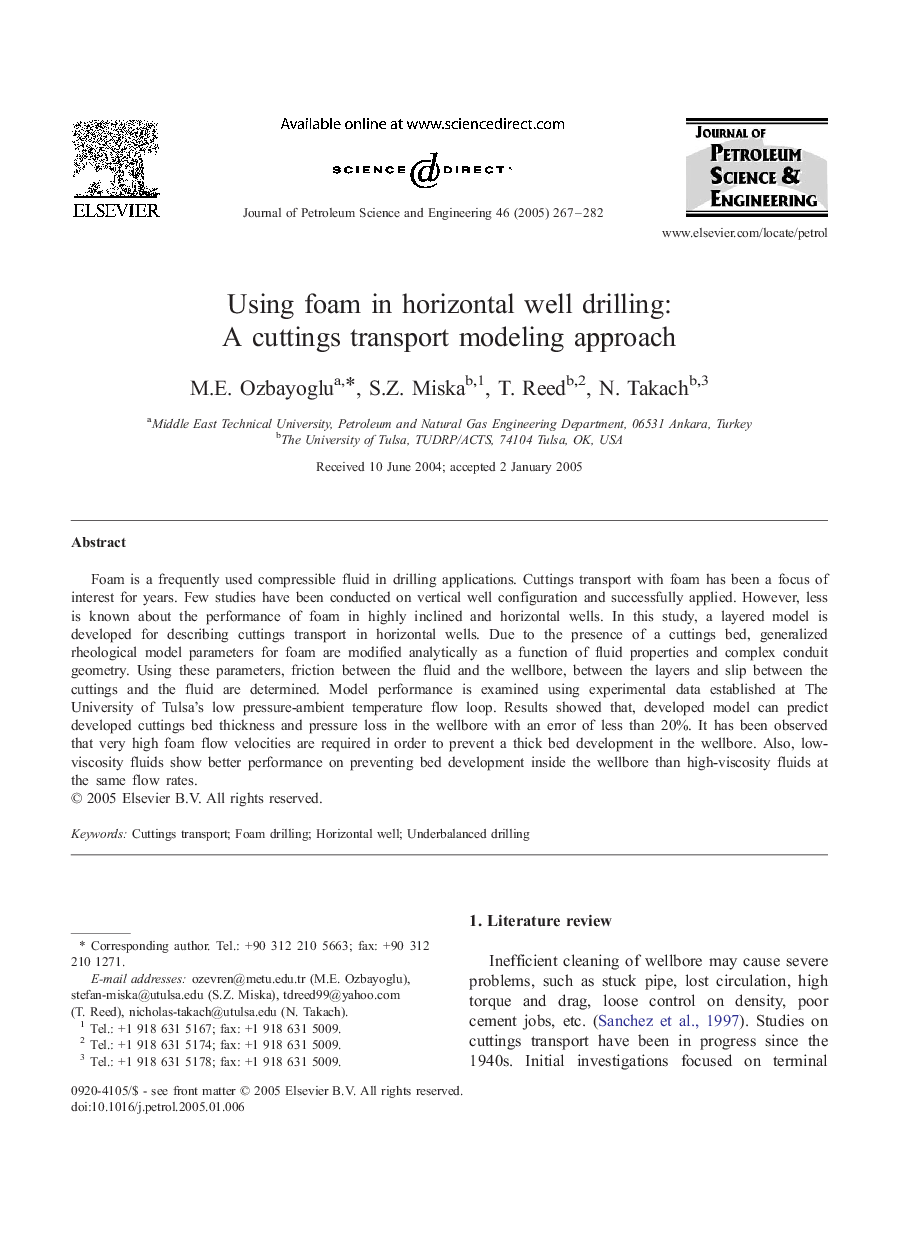| Article ID | Journal | Published Year | Pages | File Type |
|---|---|---|---|---|
| 10690242 | Journal of Petroleum Science and Engineering | 2005 | 16 Pages |
Abstract
Foam is a frequently used compressible fluid in drilling applications. Cuttings transport with foam has been a focus of interest for years. Few studies have been conducted on vertical well configuration and successfully applied. However, less is known about the performance of foam in highly inclined and horizontal wells. In this study, a layered model is developed for describing cuttings transport in horizontal wells. Due to the presence of a cuttings bed, generalized rheological model parameters for foam are modified analytically as a function of fluid properties and complex conduit geometry. Using these parameters, friction between the fluid and the wellbore, between the layers and slip between the cuttings and the fluid are determined. Model performance is examined using experimental data established at The University of Tulsa's low pressure-ambient temperature flow loop. Results showed that, developed model can predict developed cuttings bed thickness and pressure loss in the wellbore with an error of less than 20%. It has been observed that very high foam flow velocities are required in order to prevent a thick bed development in the wellbore. Also, low-viscosity fluids show better performance on preventing bed development inside the wellbore than high-viscosity fluids at the same flow rates.
Related Topics
Physical Sciences and Engineering
Earth and Planetary Sciences
Economic Geology
Authors
M.E. Ozbayoglu, S.Z. Miska, T. Reed, N. Takach,
